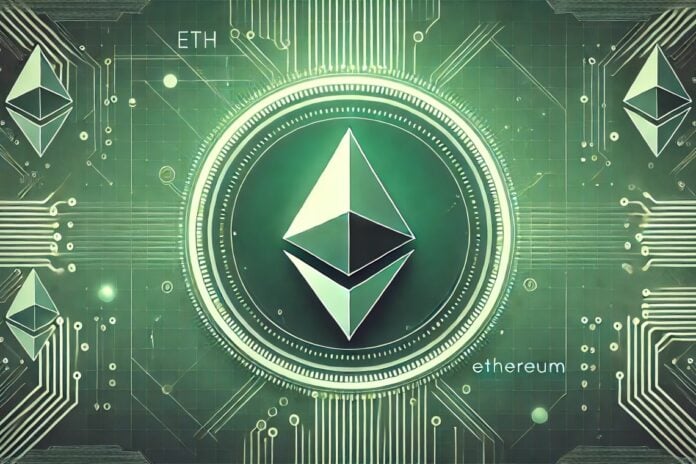VanEck has recently announced the launch of a new ETF on Ethereum (ETH) with zero fees until 2025. With this move, VanEck demonstrates its intention to keep up with the times and offer its clients an investment opportunity without additional costs.
Let’s see below all the details about it and other news.
Summary
VanEck files Form 8A for the new spot ETF on Ethereum (ETH): no fees
As anticipated, recently VanEck submitted the 8A form for its spot ETF on Ethereum. Market analysts still hypothesize July 2 as a possible launch date for these new funds.
Furthermore, VanEck has decided to adopt an innovative approach by completely waiving the fees for its ETF.
Matthew Sigel, head of digital assets at VanEck, communicated via email that the company will not apply any fees for its ETF on Ethereum.
Although the duration of this promotional offer has not been specified, it is likely that it will last until 2025.
However, if the fund’s assets were to reach 1.5 billion dollars before that date, the zero-cost structure will be revoked and a 0.20% fee will be applied.
Eric Balchunas, an ETF analyst at Bloomberg, noted that it is rare for issuers to reveal their fee structure so early, even before the official launch. VanEck is not the only company taking this direction.
Franklin Templeton, for example, has already declared that it will charge a fee of 0.19% for its spot ETF on Ethereum. Commenting on the situation, Balchunas stated the following:
“What BlackRock intends to charge is probably the most uncertain variable outside of the exact launch date. Their fee will be the benchmark for all the others. It must be competitive.”
VanEck is aware of the initial losses resulting from the adoption of a zero-commission policy. In an email sent to ETF.com, Sigel stated:
“VanEck aims to be a leader in cryptocurrency ETF fees, even at the cost of losing money initially. The goal is to recover through volume; in this case, the volume of decentralized finance.”
Spot ETF on Ethereum: expected demand lower compared to Bitcoin, according to Bernstein
The Spot ETF on Ethereum, recently approved, is expected to attract significantly less interest from investors compared to the ETF on Bitcoin, according to a report published on Monday by Bernstein.
The management company has predicted that this second ETF based on cryptocurrencies will attract demand on a very small scale.
Although the ETF on Ethereum has not yet been launched, the market is eagerly awaiting its arrival. However, experts point out that the lack of staking functionality in the ETF on Ethereum could reduce spot conversions.
Furthermore, the current market conditions could further dampen interest in this product once it becomes available. Despite the approval of the product, a timeline for the start of trading has not yet been established.
The Securities and Exchange Commission (SEC) of the United States approved a crucial regulatory filing last month, fueling speculation that the ETF could be launched in July.
Bernstein has stated the following:
“Ethereum as the main platform for tokenization is building a solid use case, both for stablecoin payments and for the tokenization of traditional assets and funds.”
Furthermore, they stated that an “improved regulatory regime” would be beneficial for Ethereum. However, it is unlikely that such a change will occur before the next presidential elections in the United States in November.
The supply of Ether increases: inflation after the Dencun update
The supply of Ether (ETH) has reached its longest inflationary period since the Merge that occurred in 2022. It seems that the Dencun update of the blockchain, implemented in March, is the main cause of this increase.
According to the data from the Ethereum ultrasound.money dashboard, the supply of Ether has gradually increased, with over 112,000 ETH added to the total supply since April 14.
Much of this inflationary growth is attributable to the Dencun update, introduced on March 13.
This update has implemented nine Ethereum Improvement Proposals (EIP), including the EIP-4844, which seems to be the main cause of the increase in supply.
The EIP-4844 has introduced “blob”, a mechanism that allows for temporarily and separately storing transaction data, thus reducing the fees paid for block data on Ethereum’s layer-2 networks.
The Dencun update also introduced proto-danksharding, which improved efficiency in data availability for block space on the Ethereum mainnet.
This development has led to a significant reduction in transaction execution costs on Ethereum layer-2 networks, such as Arbitrum and Optimism. However, it has also resulted in a notable decrease in the total amount of ETH burned on the mainnet.
Despite the supply of ETH increasing in an inflationary manner in recent months, the overall supply of ETH has still decreased significantly after the Merge.
Since September 2022, more than 1.5 billion ETH have been burned, while 1.36 billion ETH have been added to the supply, leading to a net reduction in the supply of 345,000 ETH.
This decrease corresponds to just over 1.1 billion dollars at current market prices, since Ethereum switched to a proof-of-stake consensus mechanism.




